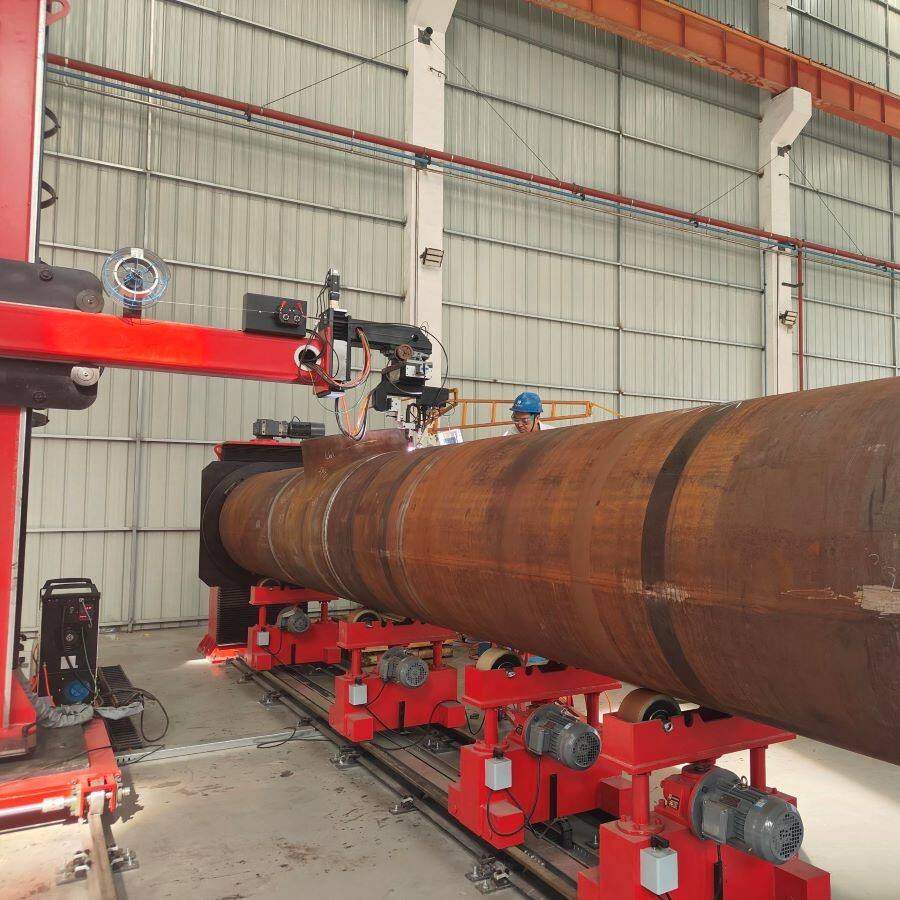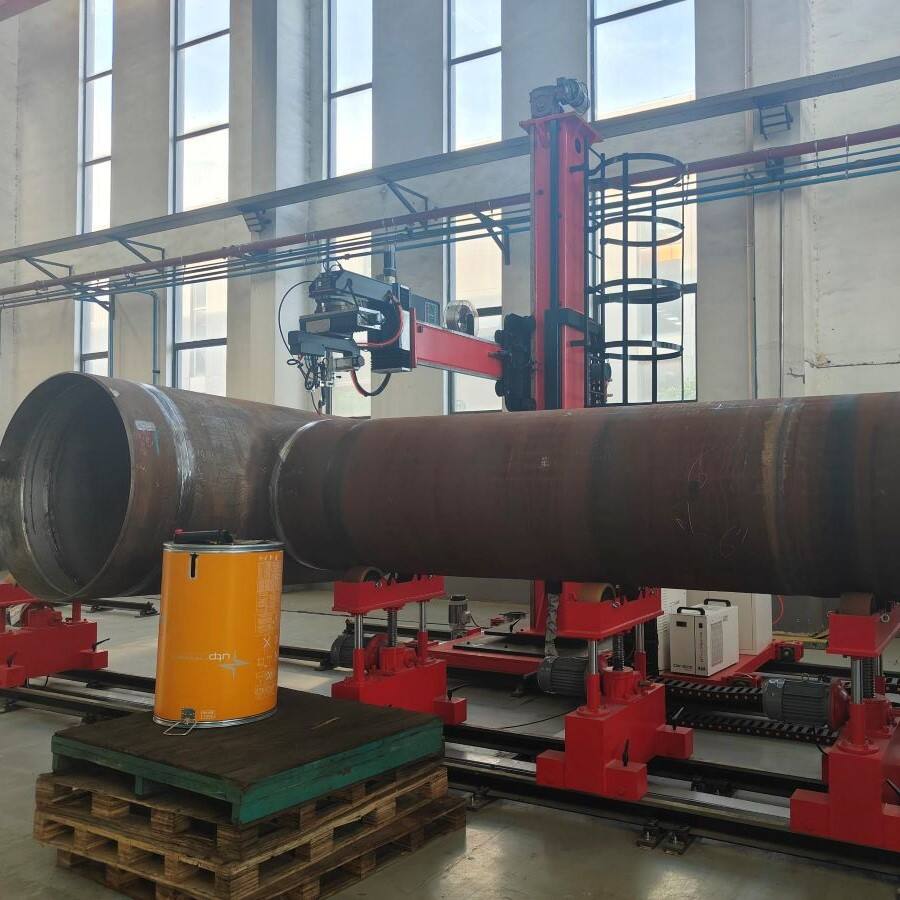高度な表面保護による機器寿命の延長
磨耗、腐食、過酷な圧力が常に発生する業界では、機器の長寿命化が重要課題となります。 溶接オーバーレイクラディングシステム は、機器の表面を強化し、過酷な環境から保護し、修理や交換の頻度を最小限に抑えるための専門的なソリューションです。この方法は、基材に高機能合金の層を適用することで、耐久性を高め、長期的なコスト削減を提供します。石油・ガス、発電、鉱業、化学プロセスなどの分野では、この技術を導入する企業が増加しています。その利点は保護を越えて、運用効率、持続可能性、ライフサイクル管理にも及んでいます。
溶接オーバーレイクラッドシステムの主な利点
腐食抵抗性の向上
の最大の利点の一つは、 溶接オーバーレイクラディングシステム とは、腐食に抵抗する能力です。産業用機器は、通常、腐食性流体、ガス、または化学薬品と接触し、それにより基材が急速に摩耗する可能性があります。腐食防止層を追加することで、重要な部品の寿命が延長され、過酷な環境下でも安定した性能を維持できます。
摩耗防止性能の向上
過酷な産業環境では摩耗や劣化は避けられません。研磨性粒子、滑り摩擦、高圧流体などによって引き起こされる機器の劣化は、高価な停止時間につながることもあります。溶接オーバーレイ溶射システムは摩耗に対して強力な保護を提供し、早期の損傷を防ぎ、長期にわたる運用効率を維持します。
溶接オーバーレイ溶射の経済的なメリット
長期的なメンテナンス費用の削減
溶接オーバーレイ溶射システムへの初期投資は一般的な表面処理よりも高額になる可能性がありますが、長期的な節約効果は非常に大きいです。機器の故障が減少することで緊急修理が減り、停止時間が短縮され、保守スケジュールがより予測可能になります。このような節約効果により、機器の寿命全体を通じて経済的に合理的な投資といえます。
機器の耐用年数の延長
溶接オーバーレイクラッドシステムが提供する耐久性は、直接的に装置の長寿命化につながります。頻繁に交換が必要であった部品でも、標準的な寿命を何年も超えて使用し続けることが可能になります。このような長期間の使用はコスト削減に加えて材料廃棄量を減らし、持続可能な運用を支援します。
溶接オーバーレイクラッドの応用
石油・ガス産業での用途
石油・ガス生産においては、設備は常に高圧、腐食性物質、摩耗性粒子にさらされます。溶接オーバーレイクラッドシステムは、バルブ、配管、圧力容器に適用され、過酷な条件下でも信頼性を確保します。内部および外部からの脅威に耐えることで、この技術は最も過酷な業界の一つにおいて運転の安定性を維持するのを助けます。
発電およびエネルギー分野
発電プラントは、蒸気・ガスおよび高温を処理するために高性能システムに依存しています。溶接オーバーレイクラッドシステムにより、タービンやボイラー、配管が健全で効率的に保たれます。補修部品の必要性が減ることで停止時間が最小限に抑えられ、エネルギー供給事業者が安定した出力を維持しつつ運転コストを削減するのに役立ちます。

溶接オーバーレイクラッドの技術的強み
層間の強固な接合
他の表面処理とは異なり、溶接オーバーレイクラッドシステムは母材と合金の間に冶金的結合を形成します。この結合により、過酷な圧力や熱サイクル下でも保護層が確実に付着し続けます。その結果、他の代替手法と比較して優れた強度と耐久性を発揮します。
自由に選択可能な合金
さまざまな環境では特定の保護が必要です。溶接オーバーレイ・クラッドシステムを用いることで、合金層を特定の産業条件に合わせてカスタマイズできます。腐食性環境向けのニッケル系合金から、摩耗が激しい用途向けのハードフェーシング材まで、この適応性により性能を最大限に発揮できます。
溶接オーバーレイ・クラッドの持続可能性への貢献
物質 の 廃棄 を 減らす
設備の頻繁な交換は、材料消費と廃棄物の増加を招きます。溶接オーバーレイ・クラッドシステムにより部品の寿命が延長され、新規材料の必要性が減少します。このようにして持続可能性の向上が図られ、環境への影響を最小限に抑えながら効率を維持するという現代産業の目標に合致します。
二酸化炭素排出量の削減
修理や交換、新規部品の製造頻度を減らすことで、溶接オーバーレイ・クラッドシステムを採用した企業は間接的に炭素排出量を削減できます。この技術は経済的な利益だけでなく、環境への責任を果たす上でも有効です。
最新の産業慣行との統合
予知保全プログラムの支援
溶接オーバーレイクラッドシステムの耐久性は、予知保全戦略を補完します。オーバーレイクラッドで保護された設備は、より効果的に監視可能となり、予期せぬ故障による運転中断が減少します。この相乗効果により、予知技術が最大限の価値を提供するよう保証されます。
過酷な環境との適合性
洋上プラットフォームから高温の炉まで、溶接オーバーレイクラッドシステムは、素材の限界まで押し詰められる環境に耐えるように設計されています。この適合性により、その応用範囲が広がり、常に運用上の課題に直面する業界において多用途な選択肢となります。
長期的な投資収益
ダウンタイムと運用中断の削減
予期せぬダウンタイムは、産業施設にとって最も費用のかかる課題の一つです。溶接オーバーレイクラッドシステムは、設備の突然の故障を防ぐことにより、このリスクを大幅に軽減します。運転の継続性が生産性と財務的安定性を高めます。
時間経過に伴う資産価値の最大化
設備は大きな資本投資であり、その価値はどれだけ長く効果的に使用できるかにあります。溶接オーバーレイクラッディングシステムを用いることで、耐用年数を延ばし、交換頻度を減少させることにより、企業は資産に対するリターンを最大化することができます。これにより、導入に対する長期的な財務的裏付けが強化されます。
溶接オーバーレイクラッディングの将来可能性
自動溶接技術との統合
自動化技術が進歩するにつれ、溶接オーバーレイクラッディングシステムの適用はさらに効率的になります。自動溶接は、精度・一貫性・スケーラビリティを保証するため、さまざまな業界や用途においてこの技術をより広く利用可能にします。
グローバルな産業イノベーションへの貢献
溶接オーバーレイクラッディングシステムの導入は、革新的で持続可能かつ費用効果の高い産業ソリューションを目指すグローバルな動きと一致しています。耐久性と効率性を融合させることで、将来を見据えた産業プロセスの中核技術としての地位を確立しています。
よくある質問
溶接オーバーレイクラッドシステムは標準的なコーティングとどのように異なりますか?
表面コーティングは時間の経過とともに摩耗する可能性がありますが、溶接オーバーレイクラッドシステムは母材と冶金的な結合を形成します。これにより、より永続的で耐久性のある保護層が作られます。
溶接オーバーレイクラッドの恩恵を最も受ける産業はどれですか?
石油・ガス、発電、鉱業、化学プロセスなどの産業は、高圧、摩耗性、腐食性の環境にさらされるため、非常に大きな恩恵を受けます。
溶接オーバーレイクラッドシステムは長期的にみて費用対効果がありますか?
はい。初期費用は高くなるかもしれませんが、修理や交換、停止時間の削減により、長期的には強力な財務的リターンが得られます。
溶接オーバーレイクラッドは特定の用途に合わせてカスタマイズできますか?
はい。それぞれの用途に特有の要件を満たすために異なる合金を選択でき、摩耗、腐食、極端な温度に対する最適な保護を確保できます。

 EN
EN
 AR
AR BG
BG HR
HR CS
CS DA
DA NL
NL FI
FI FR
FR DE
DE EL
EL HI
HI IT
IT JA
JA KO
KO NO
NO PL
PL PT
PT RO
RO RU
RU ES
ES SV
SV TL
TL IW
IW ID
ID LT
LT UK
UK SQ
SQ HU
HU TH
TH TR
TR FA
FA AF
AF CY
CY MK
MK LA
LA MN
MN KK
KK UZ
UZ KY
KY